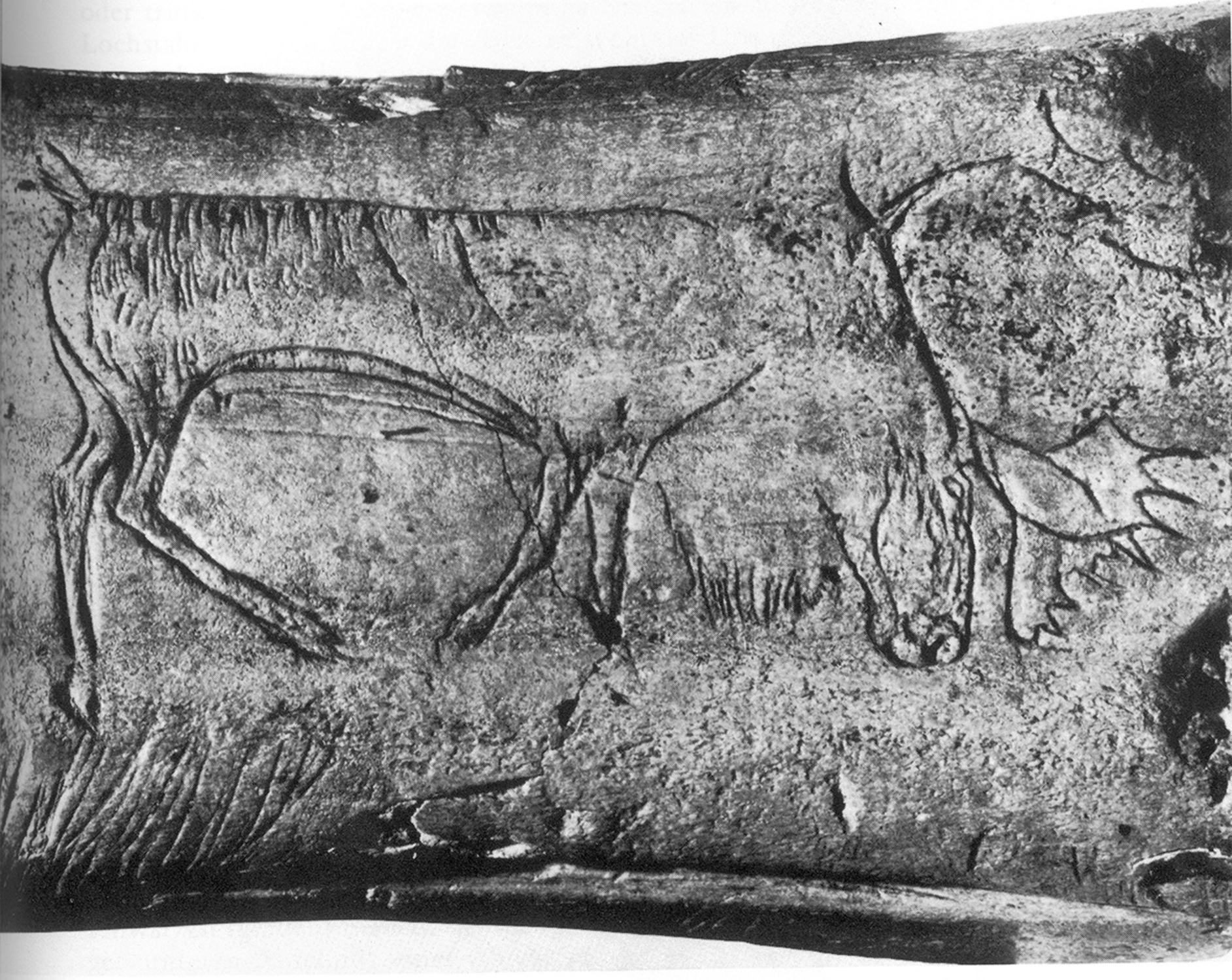
- Home
- More insights into the Magdalenian way of life
- The Magdalenian in Switzerland
- An economy based on the hunting of diverse prey
Studies in zooarchaeology carried out in approximately ten Magdalenian sites in Switzerland have provided important information that helps us understand the way of life of human populations and put forward a model for territorial occupation.
Non-specialist hunters
Animals provided for almost all human needs and were therefore central to their dietary, technological and symbolic preoccupations. Reindeer and horses were the main sources of food, but alongside this duo, characteristic of the Tardiglacial, bison and a wide range of small animals, such as ibex, marmots, mountain hares and Arctic foxes, and a variety of birds and fish, were sometimes consumed. The presence of bones from sousliks containing traces of cuts shows that even small rodents weighing under 300 g were consumed.
The use of different animal species
Certain species were preferred for specific uses, but when this particular game was lacking other species would be called on. Hence, the Magdalenians’ existence did not depend on the presence of one particular species. Only reindeer provided something for which there was no substitute: there was no other material that could replace reindeer antler for the production of sagaies, perforated batons and spear throwers.
Beyond their use to satisfy dietary and technological needs, the different species also had symbolic functions, as seen in the use of certain teeth and bones for adornment, as well as by the representations of animals on objects at Kesslerloch, Schweizersbild and Rislisberg.




